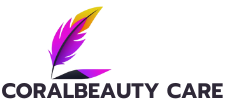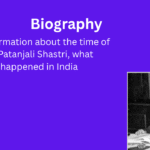A plagiarism software work detector looks for similarities between your writing and previously published works using sophisticated database tools. Universities use them to scan homework submitted by students. To check your own work before submitting, you can also use professional plagiarism checkers.
Plagiarism software checkers index and go web content in the background, comparing your text to a database of already published online content to look for similarities. Exact matches are highlighted by keyword analysis. (paraphrasing plagiarism).
On the user’s end, the plagiarism checker usually shows the plagiarism, indicates the sources, and gives you a percentage of plagiarism. An interactive preview of the Scribbr Plagiarism Checker is provided below.
1.Differences between plagiarism software work checkers
- Although the majority of plagiarism software work function similarly, several variations exist among them that impact the types of plagiarism they are able to identify.
- We carried out extensive research to find the top plagiarism checkers in 2022 so that you may select the best tool. The main distinctions between checkers are also covered in the article below.
The size of the database
- Not all plagiarism software work have the same database at their disposal. Results may differ significantly as a result of this.
- The databases of free plagiarism detectors are frequently smaller. This indicates that there are significant gaps in their capacity to locate matches, particularly when it comes to less accessible internet content. Larger databases enable the best plagiarism detectors to locate matches more easily.
- The free version of Scribbr’s plagiarism detector provides access to a large database. This database includes books, scholarly journals, and scientific publications in addition to online sources.
Quality of scanning
- Additionally, there are huge variations in the scanning software’s quality. Only exact matches are recognized by many free checkers. These checkers won’t likely flag it if you paraphrased too closely or neglected to include a citation.
- A technique known as “fingerprinting” is used by top-notch plagiarism detectors to identify non-exact matches between paraphrased or modified material.
- Here, the program looks for structural similarities by scanning sentence fragments. Each text fragment should be entirely unique, unlike any fingerprint found in an existing document, just like a true fingerprint. These checkers can determine whether there are any matches.

2.What plagiarism checkers can’t identify
- Although plagiarism software work are continually evolving and improving, they can’t recognize everything yet.Concepts and non-textual plagiarism
- If an idea has been entirely reworked or translated, plagiarism checkers frequently have trouble detecting it. Additionally, they are unable to assist with other types of non-text plagiarism, like image plagiarism.
- Translated text, idea, image, and other non-text material copying is still an issue and carries the same penalties as more obvious plagiarism.
3.Text from internal databases
- Most educational institutions have their own internal database with submitted work from past and present students in addition to basic plagiarism detectors.
- Usually, no outside parties have access to this database. This implies that your educational institution—rather than a for-profit plagiarism software work detector—will most likely be the only one to detect plagiarism from other students.
- However, in order to more effectively identify instances of plagiarism or other forms of academic dishonesty among students, educational institutions may grant other institutions access to their internal database. Resubmitting a friend’s work as your own or engaging in self-plagiarism are both considered plagiarism and carry the same penalties.
- Scribbr’s Self-Plagiarism Checker can be useful if you’re worried about unintentional plagiarism from private or unpublished papers, such a friend’s thesis or a previously submitted article. This service allows you to submit documents that might still be in your university’s database but are not accessible online.
ccleaner cheak now ccleaner software






